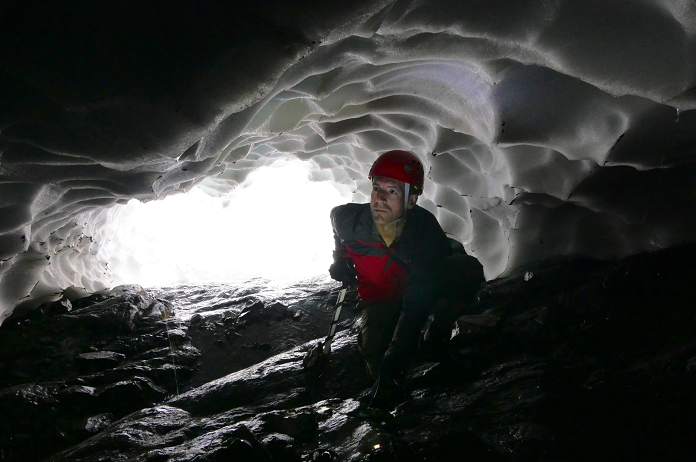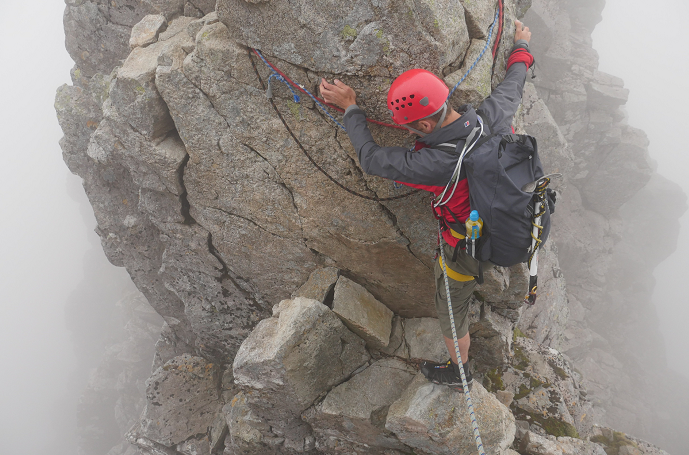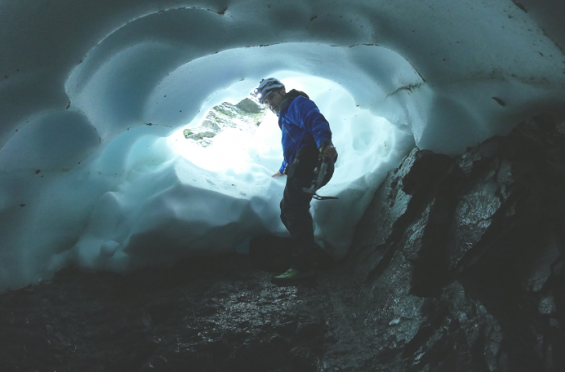These fantastic images show snow tunnels that have formed on the north face of Scotland’s highest mountain.
Amateur snow researcher Iain Cameron, 43, climbed the mountain to document the summertime snow levels.
And he admits that the snow tunnels are some of the most “visually impressive” things he has seen during his research.
Iain, from Stirling, contributes his research to the Royal Meteorogical Journal, and he was joined on Ben Nevis at the weekend by his colleague Alistair Todd.
Iain explained how the snow tunnels on the mountain forms.

He said: “Snow forms in winter all over the mountain and when it becomes windy, it gets blown over the cliffs.
“When the snow starts to melt in the spring and even in the summer, you’ll start to get a little stream forming underneath the snow in a concourse.
“This creates a little tunnel at first but when the wind begins to pass through the tunnel, it gets much bigger.

“Effectively the snow is melting from above and below and that’s what forms these impressive snow tunnels.
“You don’t find snow tunnels all over the face of Ben Nevis. Where you always find them is where the snow sits on top of a water concourse.
“However, you can find snow tunnels on mountains all over the area and on the islands as well.

Iain, an environmental manager for an aerospace company, has been working as an amateur snow researcher since 1994.
And he admits that seeing the snow tunnels is one of the things that attracts him most to climbing mountains for his research.
He added: “They are incredible things to see. One of the reasons I go to these snow formations is because they are so visually impressive.
“You can even walk through the snow tunnels during summer, it’s like going caving.
“I’m not an academic. I do this just as a hobby and purely as an amateur. It’s all done out of my own expense.”
